|
 |
|
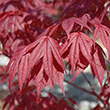
The 'Nuresagi' grows 10-20' tall and 10-15' wide at its full life span, but will most likely stay 8-10' tall and 6-8' wide in the first 10 years of its life. It is faster growing than other Japanese maple varieties and will grow best in organically rich, moist, but well-draining soil. Deep purple-red leaves are this variety's most striking feature, with leaves turning a rich crimson color in the fall.
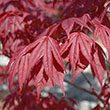
The 'Nuresagi' grows 10-20' tall and 10-15' wide at its full life span, but will most likely stay 8-10' tall and 6-8' wide in the first 10 years of its life. It is faster growing than other Japanese maple varieties and will grow best in organically rich, moist, but well-draining soil. Deep purple-red leaves are this variety's most striking feature, with leaves turning a rich crimson color in the fall.
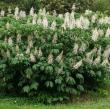
The bottlebrush buckeye is known for its long, white flowers that appear in the summertime and attract hummingbirds and butterflies. It is a thick, mounding variety that grows 8-12' tall and 10-15' wide. Its large, green foliage adds a striking contrast against the long, white flowers.
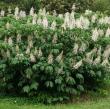
The bottlebrush buckeye is known for its long, white flowers that appear in the summertime and attract hummingbirds and butterflies. It is a thick, mounding variety that grows 8-12' tall and 10-15' wide. Its large, green foliage adds a striking contrast against the long, white flowers.
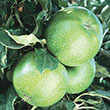
This long-lived variety will produce crisp, sweet-tart apples that are great for baking pies, cooking and fresh eating. Fruit will ripen in mid-October and can keep for up to 6 months in proper storage. The 'Granny Smith' will get about 12-15' tall and 10-15 feet wide.
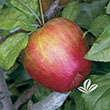
This cold-hardy apple variety produces juicy, crisp apples that ripen in early September. It grows 8 to 10' tall and has pinkish white flowers that appear in April. Best when paired with other early to mid-season blooming apple varieties.
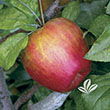
This cold-hardy apple variety produces juicy, crisp apples that ripen in early September. It grows 8 to 10' tall and has pinkish white flowers that appear in April. Best when paired with other early to mid-season blooming apple varieties.

The 'Blenheim' variety is famous in California for its production of sweet, aromatic fruit that is great for canning and drying. Produces fruit that will ripen in mid-late July depending on the climate. Will average at 10-15' tall and wide, but pruning is suggested to maintain its smaller size. Great pollinator for other apricot varieties.

The 'Celeste' fig variety is one of the most popular fig trees, due to its sweet, rich fruit that is great for fresh eating and long term storage. It is self-pollinating and fruit crop will ripen in July. The 'Celeste' grows an average of 10-15' tall and wide and requires minimal pruning. This variety is generally quite hardy, but will require winter protection in certain climates.
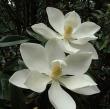
The 'Little Gem' magnolia is prized for its large, white, tea-cup shaped blooms that appear in late spring and persist through summer. Blooms are wonderfully fragrant and attract beneficial pollinators. Has a dense, upright growth habit and will reach 20-25' tall and 10-15' wide at maturity.
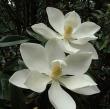
The 'Little Gem' magnolia is prized for its large, white, tea-cup shaped blooms that appear in late spring and persist through summer. Blooms are wonderfully fragrant and attract beneficial pollinators. Has a dense, upright growth habit and will reach 20-25' tall and 10-15' wide at maturity.
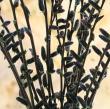
The 'Black Cat' pussy willow is a large variety that grows 10-15' tall and wide. In early spring, silvery-pink catkins appear and quickly turn jet black. Catkins are eye-catching and soft to the touch. This variety thrives in wet environments and is great for areas that are retaining moisture in your landscape. * Invasive, water-seeking roots - should be planted away from septic systems.